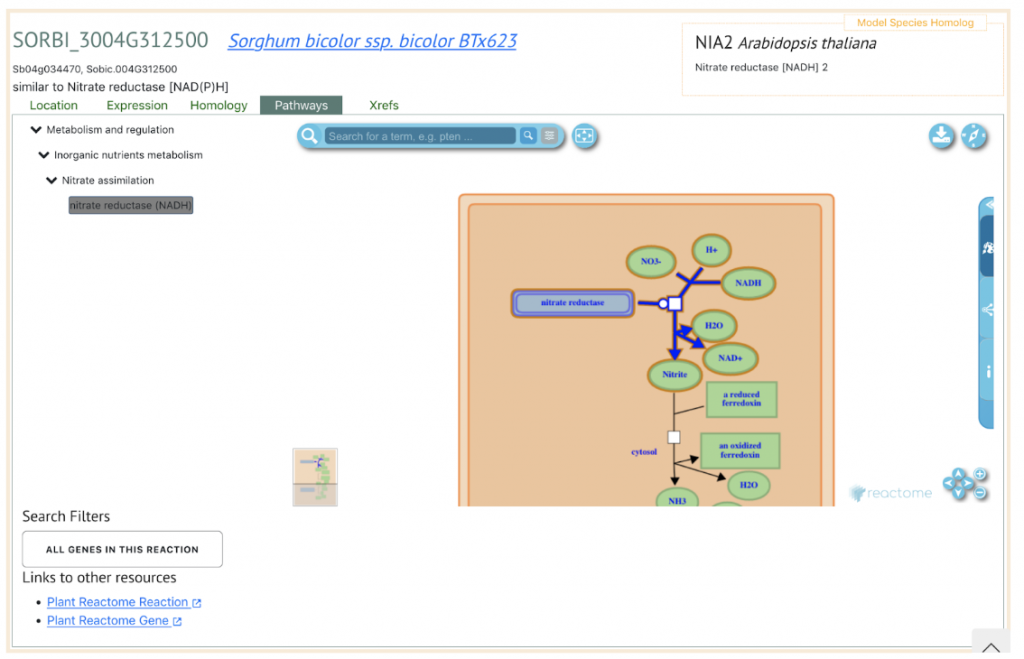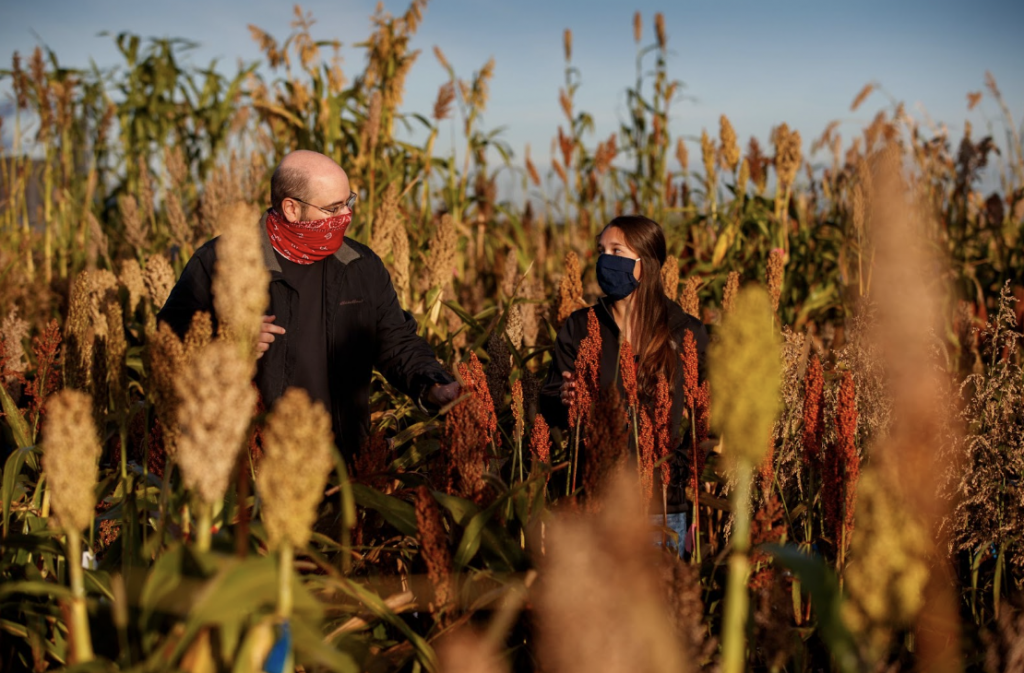Genetic Determinants of Variability in Yield in Sorghum Lines When Exposed to Low severity Nitrogen Deficit Stress
Plant growth in the wild and crop growth in cultivated conditions is limited by access to nitrogen. Although crop yields have been increased by the ready availability of synthetic nitrogen fertilizers, their use has not only substantially increased the cost to growers, but also has had a deleterious effect on greenhouse gas emissions and rural water quality. Among the sorghum lines, there is great variation not only in nitrogen stress tolerance, but also in yield, under such conditions. James Schnable and colleagues from the University of Nebraska-Lincoln, Mississippi State University, and the University of Warsaw, employed a global, genetically diverse sorghum association panel to explore the variability in metabolic, physiological, and morphological responses to nitrogen deficits and the effect on yield. Unlike in the majority of previous studies on nitrogen deficiency, which focused on large deficits in a controlled environment, the scientists studied long-term low intensity nitrogen deficits. The researchers discovered that the eight morpho-physiological traits measured in this study could only explain approximately 9% of yield differences between sorghum varieties in response to low, consistent nitrogen-stress. There were however, several metabolites that correlated with effects on yield under high and low nitrogen conditions, and these accounted for a higher proportion of variability in yield. Grain yield in sorghum under long-term nitrogen deficit stress is highly variable based on genotype. The study suggests that, in the future, predictive models could use the abundance of specific metabolites to determine which sorghum lines would be impacted more severely by nitrogen stress conditions.
When Marcin and Mackenzie started this experiment in 2020 we had no idea how timely the results would turn out to be. Back then nitrogen fertilizer was selling for only $0.24 per pound of nitrogen. In the two years between when we started and the paper coming out the price farmers are paying for nitrogen fertilizer nearly quadrupled and finding ways to grow enough grain to feed the world with less nitrogen is on everyone’s mind. – Schnable
SorghumBase Example:


Grzybowski MW, Zwiener M, Jin H, Wijewardane NK, Atefi A, Naldrett MJ, Alvarez S, Ge Y, Schnable JC. Variation in morpho-physiological and metabolic responses to low nitrogen stress across the sorghum association panel. BMC Plant Biol. 2022 Sep 9;22(1):433. PMID: 36076172. DOI: 10.1186/s12870-022-03823-2. Read more
Related Project Websites:
Schnable Lab – University of Nebraska-Lincoln https://schnablelab.org/


